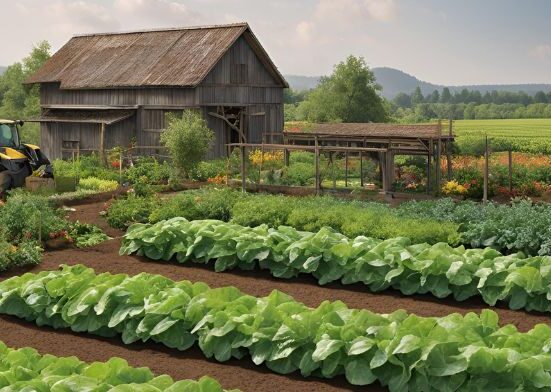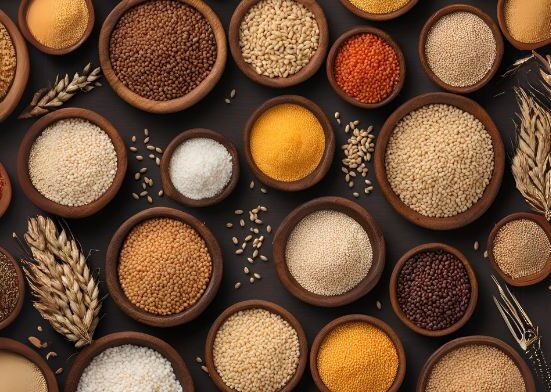Soil health is the foundation of a thriving home garden. Whether you’re growing vegetables, flowers, or herbs, the quality of your soil directly impacts plant growth, resilience to pests, and overall yield. Yet, even the most enthusiastic home gardeners often overlook or misunderstand soil. In this comprehensive guide, we delve into the essentials of soil health, why it matters, and actionable steps you can take to improve it in your backyard.
Importance of Soil Health for Successful Gardening
Soil health is the foundation of successful gardening, as it directly impacts plant growth, nutrient availability, and overall garden productivity. Healthy soil is rich in organic matter, minerals, and microorganisms that support the complex ecosystem plants rely on. It provides plants with essential nutrients like nitrogen, phosphorus, and potassium, which are necessary for growth, flowering, and fruiting. Good soil health also ensures proper drainage and aeration, which prevents waterlogging and root rot while allowing roots to access oxygen. A healthy soil ecosystem, with beneficial microbes like earthworms and bacteria, also helps break down organic matter, enriching the soil with nutrients over Turning Trash into Treasure: Composting Techniques to time.
In addition, healthy soil fosters a balanced environment where plants can develop stronger roots, resist pests and diseases, and adapt to environmental stresses. This leads to higher yields, fewer plant problems, and more sustainable gardening practices. On the other hand, poor soil health can result in stunted growth, nutrient deficiencies, and greater vulnerability to pests and diseases. Incorporating organic matter, practicing crop rotation, and avoiding excessive use of synthetic chemicals are effective ways to maintain and improve soil health. Ultimately, maintaining healthy soil ensures a thriving garden and supports the long-term success of gardening. How to improve soil health in home garden efforts.
Brief Explanation of What “Soil Health” Means
 Soil health refers to the condition of the soil in terms of its ability to function as a living ecosystem that supports plant life, animal life, and a range of ecological processes. It is determined by factors such as soil structure, organic matter content, nutrient availability, and biological activity. Healthy soil contains a diverse population of microorganisms, such as bacteria, fungi, and earthworms, which work together to break down organic material and recycle nutrients. This biological activity is crucial for the soil’s ability to retain water, improve soil fertility, and enhance plant growth.
Soil health refers to the condition of the soil in terms of its ability to function as a living ecosystem that supports plant life, animal life, and a range of ecological processes. It is determined by factors such as soil structure, organic matter content, nutrient availability, and biological activity. Healthy soil contains a diverse population of microorganisms, such as bacteria, fungi, and earthworms, which work together to break down organic material and recycle nutrients. This biological activity is crucial for the soil’s ability to retain water, improve soil fertility, and enhance plant growth.
In addition to its biological properties, soil health depends on its physical attributes, including texture, drainage, and compaction. These factors influence root growth, water movement, and the soil’s capacity to hold nutrients. Soil health is essential for maintaining agricultural productivity, supporting biodiversity, and preventing erosion. Healthy soils also contribute to carbon sequestration, which helps mitigate climate change. Practices like crop rotation, reduced tillage, and organic farming can enhance soil health by promoting biodiversity, improving organic matter content, and minimizing harmful chemical inputs. In essence, soil health is critical to sustainable agriculture and ecosystem management.
Understanding Soil Health
Soil health is a critical component of sustainable agriculture and environmental conservation. It refers to the ability of soil to function as a living ecosystem that supports plant growth, maintains water quality, and sustains biodiversity. Healthy soil is rich in organic matter, nutrients, and beneficial microorganisms, which work together to support plant roots and enhance soil structure. Key indicators of soil health include soil structure, nutrient content, pH levels, and the presence of beneficial organisms like earthworms and microbes. Maintaining soil health involves practices such as crop rotation, reduced tillage, composting, and minimizing the use of harmful chemicals. These practices help prevent soil degradation, promote soil fertility, and protect water resources. By understanding and improving soil health, we can ensure that soils remain productive, resilient to climate change, and capable of supporting future generations of agriculture and Weed management strategies in ecosystems.
What is Healthy Soil?
Healthy soil is vital to a thriving ecosystem, supporting plant growth, water filtration, and biodiversity. It is rich in nutrients, organic matter, and microorganisms that work together to enhance plant health and productivity. Healthy soil has a good structure, with proper aeration and moisture retention, allowing roots to access essential elements like nitrogen, phosphorus, and potassium. It contains a balance of living organisms, including bacteria, fungi, earthworms, and insects that break down organic material and create pathways for air and water. The soil’s pH level is typically balanced, neither acidic nor alkaline, supporting diverse plant life. In healthy soil, carbon is stored, helping to mitigate climate change by reducing greenhouse gases. Furthermore, healthy soil is resilient, able to resist erosion, recover from disturbances, and maintain long-term fertility. Proper soil management practices like crop rotation and composting are essential to preserve its how to improve soil health garden.
Assessing Your Garden Soil
Understanding your garden soil is the first step toward a thriving garden. Assessing your soil helps determine its texture, structure, pH level, and nutrient content—factors that directly influence plant health. Start by observing the soil’s appearance and feel: sandy soils drain quickly but lack nutrients, while clay soils retain water but may hinder root growth. Loamy soil, a balanced sand, silt, and clay mix, is ideal for most plants. Conduct a soil pH test to check acidity or alkalinity, as different plants thrive in various pH ranges. You can also use a soil test kit or send samples to a local extension service to identify nutrient deficiencies. Knowing your soil’s composition allows you to make informed decisions about fertilizing, amending, or adjusting watering practices. Regularly assessing and improving your garden soil creates a strong foundation for lush, healthy plants and successful seasonal gardening.
How to Test Soil (DIY Methods and Professional Testing)
Testing your soil helps you understand its pH, nutrient levels, and overall condition. Here are a few methods:
- Soil Texture Test: Take a small amount of soil, moisten it with water, and squeeze it in your hand. If it forms a ribbon, you may have clay soil. If it crumbles easily, it’s likely sandy. If it holds together but breaks easily, you have loam soil.
- Jar Test: Mix soil with water in a clear jar and shake well. Let it settle for 24 hours. The soil will separate into layers: sand at the bottom, silt in the middle, and clay at the top.
- pH Test Kits: Purchase a soil pH kit from a garden center and follow the instructions. The pH will tell you if your soil is too acidic (below 7), neutral (7), or alkaline (above 7).
- Professional Testing: Professional labs can analyze soil pH, nutrient levels, and organic matter content. These tests typically cost more but offer a comprehensive overview.
Identifying Soil Types (Clay, Sandy, Loamy)
Understanding the soil type in your garden is essential for properly managing it.
- Clay Soil: It feels sticky when wet and hard when dry. Clay soil retains moisture but can become compacted, limiting air and water flow to plant roots. It can be challenging to work with, but adding organic matter can help improve How to improve soil health in the home garden.
- Sandy Soil: Sandy soil has a gritty texture and drains quickly. While it’s easy to work with, it doesn’t hold nutrients well, making it harder for plants to grow unless amended with organic materials or compost.
- Loamy Soil: Loam is the ideal soil type for most plants. It’s a balanced sand, silt, and clay mix, offering good drainage and nutrient retention. Loamy soil is typically rich in organic matter and supports plant growth efficiently.
Building Better Soil Structure
Soil structure refers to the arrangement of soil particles and the spaces (pores) between them. A well-structured soil promotes healthy plant growth by allowing roots to penetrate easily, air to circulate, and water to drain efficiently. Good soil structure also supports beneficial microorganisms that help break down organic matter and improve nutrient availability. Improving soil structure is essential for maximizing productivity and ensuring long-term soil Sustainable irrigation health.
Importance of Aeration and Drainage:
Aeration and drainage are critical aspects of soil structure that impact plant health. Aeration refers to creating air spaces within the soil, which allows oxygen to reach the roots and encourages microbial activity. Without proper aeration, roots suffocate, and plants struggle to grow. Drainage ensures that excess water is removed from the soil, preventing waterlogged conditions that can lead to root rot and nutrient leaching. Proper aeration and drainage balance moisture and air, creating an ideal environment for plants to garden soil health to thrive.
Techniques to Improve Soil Structure:
- Double Digging: Double digging involves digging two layers of soil, typically 12 to 18 inches, and loosening the soil beneath. This method improves aeration and drainage in compacted soils and helps incorporate organic matter deeper into the soil, fostering root growth. It is beneficial for raised beds or garden plots needing significant structural improvement.
- Broadforking: A broad fork is designed to aerate the soil without turning it over, preserving soil organisms and structure. Broadforking involves pushing the tool into the soil and gently pulling it back to loosen it. This technique enhances soil structure, encourages root growth, and improves drainage without disturbing the soil’s layers.
- Raised beds are an excellent way to improve soil structure, especially in areas with compacted or poor-quality soil. Gardeners can control the soil composition, drainage, and structure by building beds above the ground. Raised beds often contain a mix of loamy soil, compost, and organic matter, providing the ideal environment for healthy plants.
Preventing Soil Compaction:
Soil compaction occurs when soil particles are pressed together, reducing pore spaces and hindering root growth, water infiltration, and air exchange. To prevent compaction, it’s essential to minimize the use of heavy machinery or walking on wet soil. Utilizing paths between garden rows and adding organic matter like Mulch or compost can help protect the soil from compaction. Additionally, practicing techniques like broad forking and rotating crops can keep the soil loose and healthy, allowing it to retain its structure over how to improve garden soil naturally time.
Organic Matter: The Heart of Healthy Soil
Organic matter is the cornerstone of healthy, fertile soil. It consists of decomposed plant and animal material, such as leaves, compost, manure, and crop residues, which enrich the soil by providing essential nutrients and improving its structure. Organic matter enhances soil’s ability to retain moisture, supports beneficial microorganisms, and increases soil aeration, which promotes healthy root growth. Organic matter is crucial for sustainable farming and gardening practices by boosting soil fertility.
Benefits of Compost and Mulch

Compost is a decomposed organic material that provides essential nutrients, improves soil structure, and encourages beneficial microorganisms. It helps retain moisture, prevents soil erosion, and balances soil pH, promoting healthier plants. It also reduces the need for chemical fertilizers and minimizes waste by recycling organic how to maintain healthy garden soil materials.
Conversely, Mulch is a layer of organic or inorganic material spread over the soil surface. It helps conserve moisture, regulate soil temperature, suppress weeds, and prevent erosion. Organic mulches, like straw, leaves, or wood chips, break down over time, adding more organic matter to the soil while reducing the need for frequent watering and improving the overall health of your how to improve soil in a garden garden.
How to Make and Use Compost at Home
Making compost at home is a simple and rewarding process that can turn food scraps, yard waste, and other organic materials into nutrient-rich compost for your garden. Here’s how to get started:
- Choose a composting location: Select a well-drained area with good airflow for your compost bin or pile. A compost bin can help keep the materials contained, but a simple pile can also work.
- Gather materials: Compost requires a mix of “green” (nitrogen-rich) materials like fruit and vegetable scraps, grass clippings, and coffee grounds, and “brown” (carbon-rich) materials such as dried leaves, straw, or cardboard.
- Layering: Alternate layers of green and brown materials in your compost pile. Each layer should be about 4-6 inches thick.
- Maintain moisture and aeration: Keep the pile moist but not too wet. Turn it regularly to introduce air, helping the decomposition process.
- Harvest your compost: In a few months, your compost should be dark, crumbly, and have a pleasant earthy smell. Use it to enrich your soil or as a top dressing for plants.
Using Cover Crops and Green Manure
Cover crops are plants grown primarily to protect and enrich the soil rather than for harvest. These crops, such as clover, rye, and vetch, are planted off-season to prevent erosion, suppress weeds, and improve soil fertility. When these crops are tilled back into the soil, they act as green manure, adding valuable organic matter, increasing nutrient availability, and improving soil. How to improve soil health in a home garden structure.
Cover crops are particularly beneficial in areas with poor soil quality, as they help prevent nutrient depletion and enhance soil moisture retention. Additionally, they support biodiversity by attracting beneficial insects and encouraging a healthy ecosystem within your garden or farm. By incorporating organic matter, compost, Mulch, and cover crops into your gardening practices, you can create a healthy, sustainable, and productive soil environment that nurtures your plants and the building healthy garden soil earth.
Common Soil Problems in Home Gardens
Common soil problems in home gardens can significantly impact plant growth and yield. One of the most frequent issues is poor drainage, often caused by compacted or clay-rich soil, leading to waterlogged conditions that suffocate plant roots. On the other hand, sandy soils, while well-drained, may not retain sufficient nutrients for healthy plant growth. Nutrient imbalances are another common issue, where soils lack essential elements like nitrogen, phosphorus, or potassium, resulting in poor plant development. Soil acidity or alkalinity can also hinder plant health, with certain plants thriving in specific pH ranges. Soil erosion, often due to poor ground cover, further degrades the soil’s structure and fertility. Pests, diseases, and contaminants like heavy metals or chemicals can compromise soil quality. To address these problems, gardeners can amend the soil with organic matter, use proper irrigation methods, and test soil periodically for nutrients and pH levels.
Step-by-Step Guide to Improving Soil Health
 Healthy soil is the foundation for a thriving garden or farm. To improve soil health, start by testing the soil to understand its pH, nutrient levels, and composition. Next, amend the soil with organic matter like compost, manure, or cover crops, which provide essential nutrients and improve structure. Regularly rotate crops to prevent nutrient depletion and reduce pest buildup. Avoid excessive tilling, as it can harm soil structure and microbial life. Introduce natural fertilizers and Mulch to retain moisture and protect the soil from erosion. Incorporating beneficial microorganisms, like earthworms, can further enhance soil quality by breaking down organic material. Reduce chemical pesticide use, as they can disrupt the balance of healthy soil microbes. Lastly, proper irrigation techniques should be practiced to prevent waterlogging or drought stress. Consistent attention to these steps will restore and maintain soil health, ensuring a productive and sustainable environment for plants.
Healthy soil is the foundation for a thriving garden or farm. To improve soil health, start by testing the soil to understand its pH, nutrient levels, and composition. Next, amend the soil with organic matter like compost, manure, or cover crops, which provide essential nutrients and improve structure. Regularly rotate crops to prevent nutrient depletion and reduce pest buildup. Avoid excessive tilling, as it can harm soil structure and microbial life. Introduce natural fertilizers and Mulch to retain moisture and protect the soil from erosion. Incorporating beneficial microorganisms, like earthworms, can further enhance soil quality by breaking down organic material. Reduce chemical pesticide use, as they can disrupt the balance of healthy soil microbes. Lastly, proper irrigation techniques should be practiced to prevent waterlogging or drought stress. Consistent attention to these steps will restore and maintain soil health, ensuring a productive and sustainable environment for plants.
Test Your Soil
Testing your soil is a crucial step in understanding its health and fertility. It helps determine essential nutrient levels, pH balance, and other factors that affect plant growth. You can decide which fertilizers or amendments to use by analyzing your soil, ensuring your plants receive the proper nutrients. Soil testing also helps identify potential issues, such as nutrient deficiencies or toxic imbalances, allowing for targeted solutions. Regular soil testing is recommended for gardeners, farmers, and anyone looking to optimize their plant care. It is a simple, cost-effective way to improve crop yield, garden performance, and long-term soil health. With a better understanding of your soil’s composition, you can maximize the effectiveness of your gardening efforts, minimize environmental impact, and create a thriving ecosystem for building soil health plants.
Add Organic Matter
Adding organic matter to soil is fundamental for improving soil health and fertility. Organic matter, such as compost, manure, cover crops, or plant residues, is rich in nutrients and beneficial microorganisms. When incorporated into the soil, it enhances its structure by improving water retention, aeration, and drainage, which is particularly helpful for clayey or sandy soils. Organic matter also increases the soil’s ability to retain nutrients, making them available to plants over time. Additionally, it promotes the activity of soil organisms like earthworms, which further enrich the soil by breaking down organic material into humus. This humus, in turn, helps bind soil particles together, reducing erosion and providing a steady supply of nutrients for plants. Over time, the continuous addition of organic matter creates a balanced, sustainable environment that supports healthy plant growth, increases biodiversity and promotes long-term agricultural productivity.
Practice Crop Rotation
Crop rotation is an essential agricultural practice that involves changing the type of crops grown in a particular field each season. This method helps maintain soil health, reduce pest and disease buildup, and improve crop yields. By rotating crops with different nutrient needs, the soil’s nutrient balance is naturally replenished, preventing depletion of any specific nutrient. For example, legumes like beans can be planted after nitrogen-depleting crops like corn, as legumes naturally fix nitrogen in the soil. Crop rotation also helps break the lifecycle of crop-specific pests and diseases, reducing the need for chemical pesticides. This sustainable practice enhances soil structure, prevents soil erosion, and promotes biodiversity by supporting a variety of plants and insects. Ultimately, crop rotation contributes to long-term farm productivity and environmental health by promoting a more resilient and balanced ecosystem.
Use Cover Crops
Cover crops like clover, rye, and vetch add nitrogen, prevent erosion, and improve soil structure. Plant them off-season and turn them into the soil before the next. How to improve soil health in home garden planting. Excessive tilling can disrupt soil structure and harm beneficial organisms. Consider no-till or low-till methods.
Tools and Techniques for Soil Improvement
Soil improvement techniques are vital for enhancing soil fertility, structure, and water retention, ensuring better agricultural productivity and land sustainability. Various tools and methods are employed for soil enhancement, each targeting specific soil deficiencies or conditions. One of the most commonly used techniques is organic matter addition, such as compost, manure, or cover crops. These improve soil structure, increase microbial activity, and boost nutrient content. Mulching is another technique that helps retain soil moisture, suppress weeds, and regulate temperature.
Using tools like manual or mechanical aerators, soil aeration benefits compacted soils. Aeration allows for better root penetration, increased oxygen supply, and enhanced water infiltration. For soils with poor drainage, drainage systems like ditches or French drains can be installed to improve water flow and prevent waterlogging.
Another effective technique is pH adjustment, which uses lime to raise the pH of acidic soils or sulfur to lower the pH of alkaline soils. This ensures that plants can access nutrients more efficiently. For more severe cases of soil degradation, bio-remediation and soil conditioners, such as gypsum or zeolite, improve soil quality by enhancing nutrient availability and water retention. Ultimately, soil improvement tools and techniques aim to restore balance and create an optimal environment for plant growth, benefiting both agricultural practices and the land’s long-term health.
Creating a Soil Improvement Schedule
Creating a Soil Improvement Schedule is a strategic approach to enhance soil health and fertility over time. It involves assessing the soil’s current condition, identifying its deficiencies, and planning targeted interventions. The schedule should start with soil testing to determine pH, nutrient levels, and organic matter content. Based on the results, specific amendments, such as compost, fertilizers, and lime, can be incorporated into the soil. The schedule should also consider crop rotation, cover cropping, and mulching to improve soil structure and prevent erosion. Regular soil health monitoring, including periodic testing and observation of plant growth, ensures the effectiveness of the improvements. Seasonal tasks, such as tilling or adding organic matter, should be outlined clearly.
Conclusion:
In conclusion, improving soil health in home gardens is essential for promoting plant growth, enhancing biodiversity, and ensuring long-term garden sustainability. Gardeners can create a nutrient-rich environment that fosters vigorous, resilient plants by adopting practices such as composting, mulching, crop rotation, and organic fertilizers. Incorporating soil amendments like cover crops, biochar, and natural soil conditioners can further enhance soil structure, moisture retention, and microbial activity. Avoiding harmful chemicals and practicing mindful watering also helps maintain the balance of soil ecosystems. Regular soil testing ensures that gardeners can monitor and address nutrient deficiencies, optimizing plant growth.
FAQ:
Why is Soil Health Important in a Garden?
Healthy soil is essential for growing vigorous, vibrant plants. It supports root development, water retention, and nutrient availability, leading to better plant growth and higher yields.
How can I Improve Soil Structure?
Add organic matter like compost, Mulch, or manure to enrich soil structure. This helps improve aeration, drainage, and moisture retention, creating a better environment for plant roots.
What Role do Cover Crops Play in Soil Health?
Cover crops like clover or legumes prevent soil erosion, fix nitrogen, and increase organic matter, all enhancing soil health.
Should I test My Soil?
Yes, soil testing helps identify nutrient deficiencies or imbalances, guiding you in selecting the right amendments to optimize plant growth.
How Often Should I Fertilize?
Fertilize based on plant needs and soil test results, typically during the growing season, ensuring balanced nutrient levels for optimal plant health.







